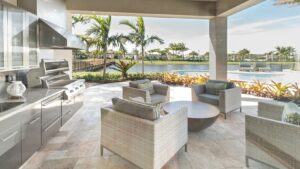In today’s fast-paced world, the mantra “Design Smart” is more relevant than ever. As technology evolves and consumer expectations rise, creating efficient, user-friendly designs is crucial for success. I’ve seen how businesses that embrace smart design not only enhance user experience but also boost their bottom line.
By adopting smart design principles, we can create solutions that are not only visually appealing but also intuitive, healthy and sustainable. This approach empowers designers to push boundaries and create products that truly make a difference. Let’s explore how embracing smart design can transform ideas into impactful realities.
Design:ehwgchxttgq= Smart

Embracing a five-star lifestyle adventure involves integrating smart design principles prioritizing luxury and efficiency. The focus on key elements like functionality and sustainability to create memorable experiences that align with a sophisticated lifestyle. Opting for materials with minimal environmental impact and incorporating innovative technologies ensures each element reflects a commitment to quality and progress.
Attention to detail becomes paramount. For example, designing spaces like lounges and dining areas demands a blend of comfort and style, ensuring guests feel both relaxed and impressed. Lighting and acoustics must enhance the ambiance while maintaining energy efficiency and visual appeal. I also consider seamless integration of smart home technologies like automated climate control and entertainment systems to deliver convenience.
Recognizing customer preferences forms the core of this lifestyle adventure. They incorporate feedback-driven design:ehwgchxttgq= smart choices, like adaptable furniture and flexible layouts, to offer personalized solutions. This responsiveness creates environments that not only meet high expectations but also anticipate future needs. These carefully crafted spaces add value and appeal, attracting discerning clientele who appreciate thoughtful design.
Key Features
At the core of the design:ehwgchxttgq= smart philosophy lie several key features that ensure designs resonate with both users and the environment.

- Functionality: Incorporating practical elements into design results in user-friendly outcomes. Examples include ergonomically designed furniture that ensures both comfort and style, and intuitive user interfaces that simplify complex operations.
- Sustainability: Prioritizing eco-friendly materials and processes minimizes environmental impact. Examples are using recycled materials and implementing energy-efficient technologies, which both appeal to conscientious consumers and adhere to modern environmental standards.
- Innovation: Pioneering new techniques and technologies keeps the design forward-looking and relevant. Designs can incorporate smart automation systems that adjust settings based on user habits, enhancing both the experience and efficiency.
- Aesthetic Appeal: Balancing visual elements with function creates immersive experiences. Use of color psychology and texture variety can affect mood and perceptions, ensuring spaces not only serve a purpose but also inspire.
- User-Centric Approach: Engaging with customer feedback leads to designs that are personalized and adaptable. This ensures experiences meet current desires while anticipating future trends, creating a seamless user journey.
These features collectively create designs that not only meet the demands of modern users but also contribute to a more sustainable and innovative future.
Performance Analysis

Analyzing performance is crucial in the design:ehwgchxttgq= smart philosophy, as it measures how effectively design solutions address user needs. Data-driven metrics reveal user satisfaction and engagement levels. By examining these metrics, I can identify design strengths and areas for improvement.
Optimization techniques, such as A/B testing, enhance design effectiveness. These techniques help determine which design elements resonate with users, ensuring that the smart design delivers optimal results. An informed approach maintains the balance between functionality and aesthetics, a core principle of smart design.
Comparison with Similar Products
Embracing the design:ehwgchxttgq= smart philosophy sets a standard that distinguishes products in a crowded marketplace. While many designs focus solely on aesthetics, the integration of functionality, sustainability, and innovation ensures a comprehensive approach that resonates with modern consumers. Unlike traditional designs that may overlook user feedback, smart design prioritizes adaptability and personalization, offering solutions that evolve with customer needs. By incorporating eco-friendly practices, it also addresses the growing demand for responsible luxury, enhancing both the product’s appeal and its environmental impact. This holistic approach not only meets but often exceeds the expectations set by similar products, positioning smart design as a leader in creating meaningful and sustainable experiences.

